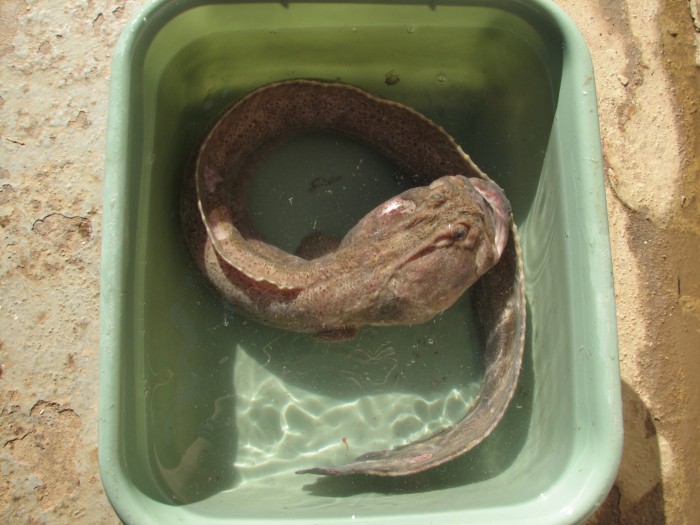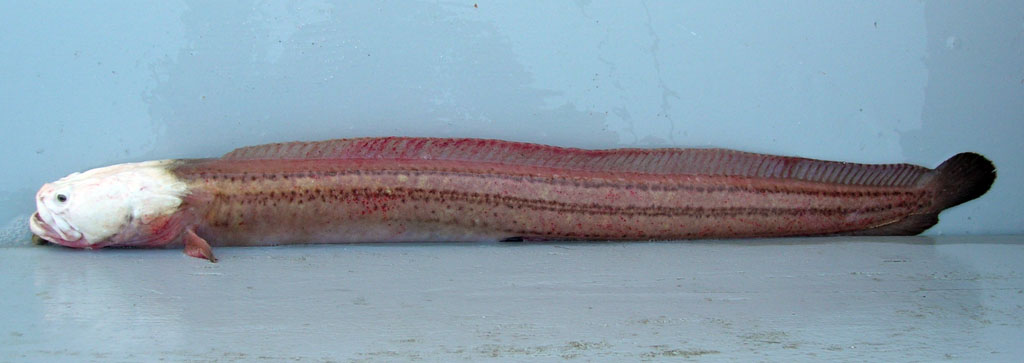
Cryptacanthodes maculatus
FAMILY
Cryptacanthodidae
TAXONOMY
Cryptacanthodes maculates Storer, 1839, off Massachusetts,
United States.
OTHER COMMON NAMES
English: Congo eel, ghostfish; French: Terrassier tachetй.
PHYSICAL CHARACTERISTICS
Body eel-like. Head flattened above. Eyes small. Mouth
large and up-turned. Pectoral fins small. Pelvic fins absent.
Dorsal and anal fins long, low, and continuous with caudal,
which is well developed. Background color brown to reddish
brown, with 2–3 irregular rows of dark brown spots or
blotches running from head to tail. The dorsal and anal fins
have rows of smaller brown spots. Abdomen pale gray. Scales
absent.
DISTRIBUTION
Southern Labrador south to New Jersey.
HABITAT
Found from just above the low tide mark (the intertidal zone)
to almost 656 yd (600 m). Constructs branching tunnels in
riverine mudflats, where it lives singly. May live in burrows or
hide in crevices or under rocks in deeper water.
BEHAVIOR
Due to their secretive burrowing habits, there have been no
observations on natural
BEHAVIOR
. One wrymouth was kept in
an aquarium, where it could not burrow. It lived instead in a
piece of rubber tubing. Thus it is likely that they hide almost
all the time and venture forth only to forage.
FEEDING ECOLOGY AND DIET
Grazing or ambush predator. Feeds on small crustaceans (amphipods,
shrimps, and hermit crabs), mollusks (limpets, sea
snails, clams, and mussels), and occasionally fishes.
REPRODUCTIVE BIOLOGY
Eggs and larvae are unknown, but wrymouths undoubtedly
spawn on the bottom and probably guard nests. Fry have been
collected in scientific sampling nets in early spring, indicating
winter spawning.
CONSERVATION STATUS
Rarely seen. Not threatened.
SIGNIFICANCE TO HUMANS
None known.
Other popular Animals
Photo Gallery of - Wrymouth





 Animalia Life
Animalia Life